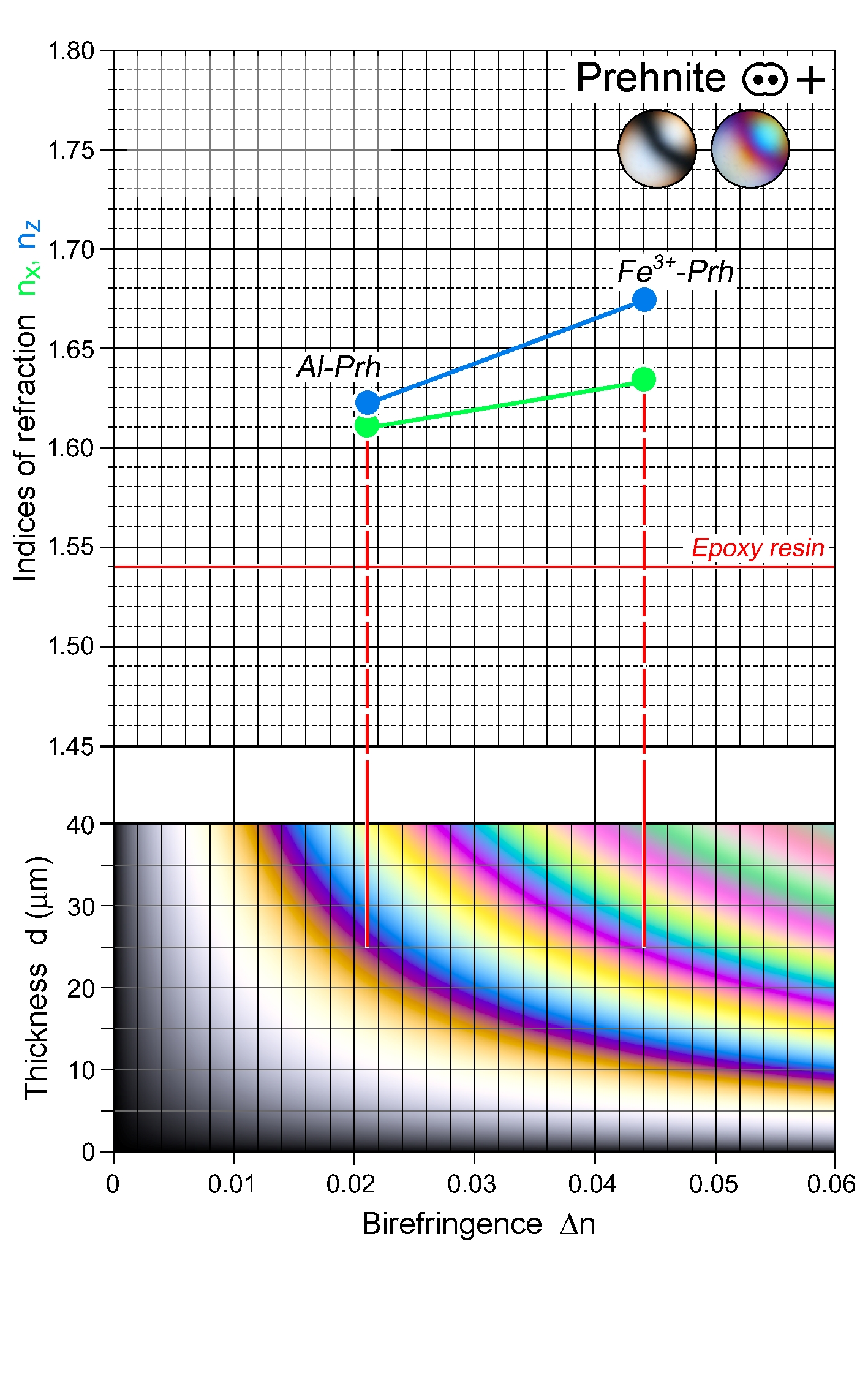|
| Formula | Ca2Al(AlSi3O10)(OH)2 |
| | Optic class & sign | Biaxial positive |
| | Optical orientation | X = a, Y = b, Z = c |
| | Optical plane | (010) |
| | Relief | Moderate-positive |
| | Refractive indices | nx = 1.611 -1.621
|
|
ny = 1.615 -1.637
|
|
nz = 1.632 -1.673
|
|
| n increases with substitution of Fe3+ for Al |
| | Birefringence (max.) | 0.022 - 0.051 |
| | | Δn increases with substitution of Fe3+ for Al; interference colours may be anomalous |
| | Optic Angle
| 2Vx
|
| | 2Vz
= 62 - 69° |
| | Sign of elongation | Length-slow, l (+) in crystals elongate ∥ c = Z; length-fast, l (-) in tabular crystals |
| | Interference figure | Sections ⊥ c show centred acute bisectrix figures. 2V moderately high, but may be anomalously small in sectors of high dispersion. |
| | Colour / pleochroism | Colourless |
| | Zoning | |
|
|
| Form | Habit | Radiating of sheaf-like aggregates with “bow-tie” structure, columnar intergrowths. Oriented intergrowths with hourglass-like structure. Distinct individual crystals are rare. |
| | | Surface | Subhedral to anhedral |
| | Cleavage | {001} distinct |
| | Twinning | Lamellar twinning on {110} may occur |
| | Extinction | Straight to cleavage and prism faces traces. Interference colours may be anomalous and extinction incomplete. |
|
|
| Reaction textures | |
| | Alteration / decomposition | Zeolites; prehnite is itself a product of saussuritic alteration of plagioclase |
|
|
| Occurence | Ign | |
| | | Met | Aluminous marbles and calcsilicate rocks, rodingite, metabasites (here stable at sub-greenschist-facies temperatures and low pressures), metagreywacke |
| | | Sed | |
| | | Hyd | Veins, cavities, amygdales in basaltic to andesitic volcanic rocks and their low-temperature metamorphic equivalents. Less common in veins associated with plutonic rocks. |
| | | Other | |
|
|
| Distinctive properties | Moderate n, moderate to high Δn, habit |
| | Additional comments | |
|
|

 Images
Images 


 Images
Images 
